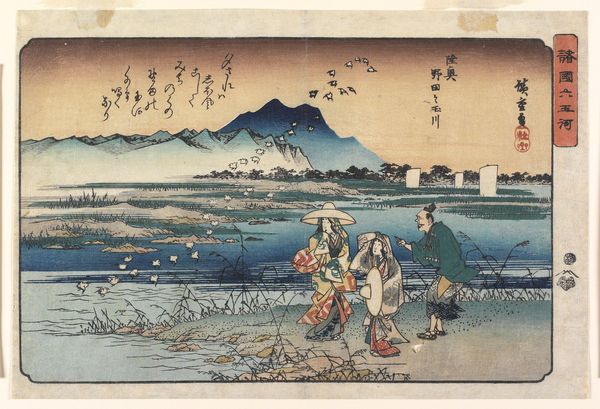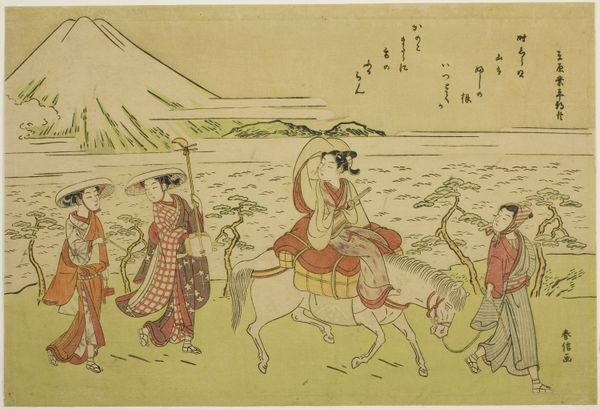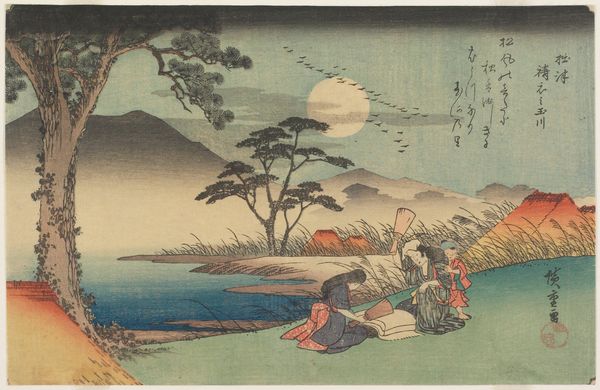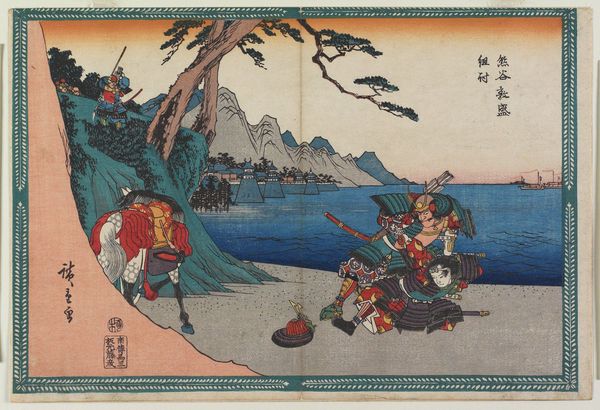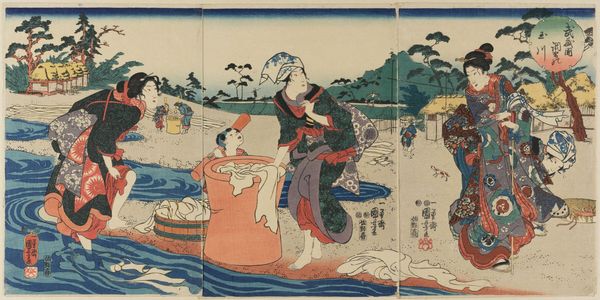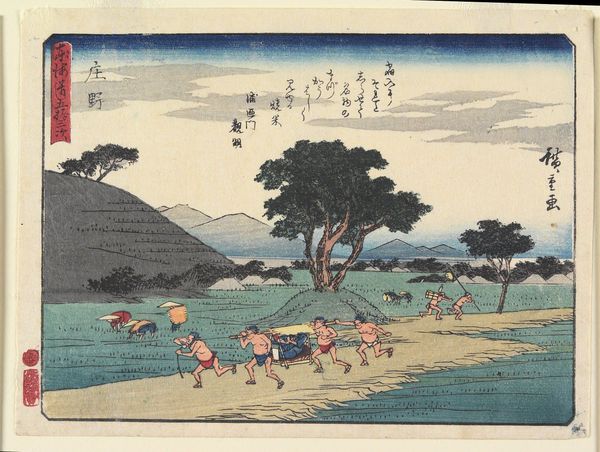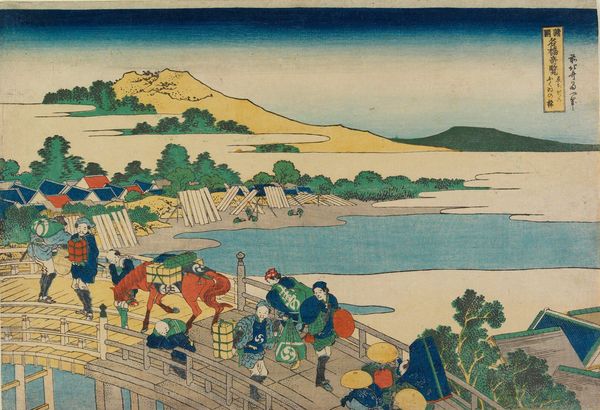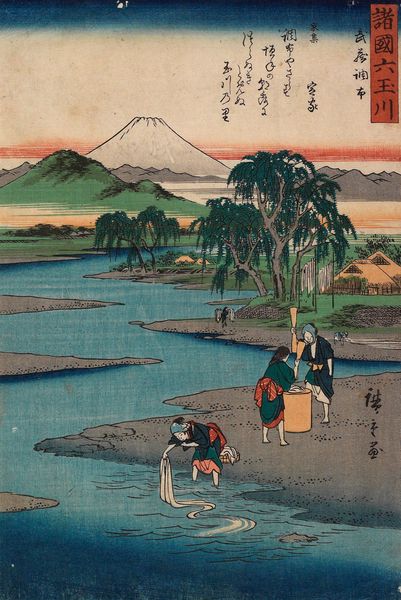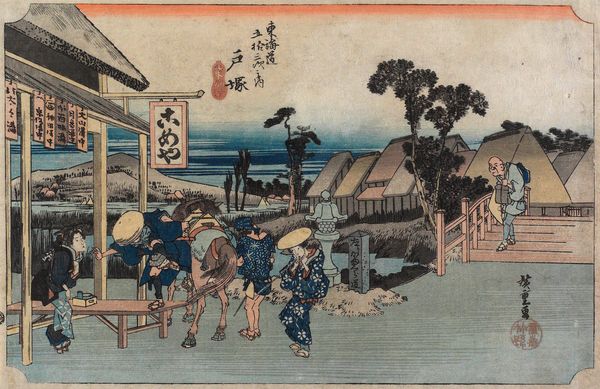
Ide Jewel River in Yamashiro Province c. 1835 - 1836
0:00
0:00
print, ink, woodblock-print
# print
#
landscape
#
ukiyo-e
#
ink
#
woodblock-print
#
genre-painting
Dimensions: 8 3/4 × 13 1/2 in. (22.2 × 34.3 cm) (image, horizontal ōban)
Copyright: Public Domain
Curator: I’m immediately struck by how peaceful and yet majestic this scene is; there's such dignity in its soft colors. Editor: This woodblock print, "Ide Jewel River in Yamashiro Province," by Utagawa Hiroshige, was created around 1835-1836. It is currently housed at the Minneapolis Institute of Art. I think the landscape, for its natural qualities, presents a unique perspective into socio-political elements of Japanese history. Curator: The symbolism is definitely strong here. Look at the river itself; water often represents purity and renewal in Japanese iconography. It is more than just landscape decoration. It's the location in which the image blooms to its cultural and personal roots. Editor: And beyond the symbolism, the historical context of Ukiyo-e, the floating world prints, reminds us how the art market catered to the rising merchant class. Curator: The composition really emphasizes that sense of journey; The travelers aren’t just placed incidentally within the natural elements, they become central and deeply blended to its symbolic identity. Their garments speak not only to status, but perhaps an idealized view of the leisure afforded to a particular class. Editor: And it's crucial to note the distribution networks of these prints. They weren't just displayed in private homes; they became accessible narratives circulating throughout the culture, informing perceptions about regions and social roles. Curator: It speaks to the heart of what art can do. A moment captured through layered impressions of colors and patterns and transformed by generations and classes as memory and cultural understanding. Editor: I think your interpretation beautifully blends individual and collective perception. By focusing on art as a cultural agent, you also allow space for considering how landscapes can become vehicles for communicating socio-political messages. Curator: It is more than just aesthetic skill but an intentional reflection of one's environment; which Hiroshige beautifully expresses and recreates in our cultural memory. Editor: Exactly! These kinds of art interpretations are vital in considering both the image itself as an art object and its complex life outside the museum, as well.
Comments
No comments
Be the first to comment and join the conversation on the ultimate creative platform.


